Other Names: Bulldog, British Bulldog
Country Of Origin: England
Dog Group: Standard
Size: Medium
Recommended For: Families, couples, single owners
Maintenance Level: Moderate/low
Lifespan: 9-11 years
Temperament: Playful, affectionate, sociable
FAQ:
Good For the First-Time Owner: Yes
Good With Children: Yes
Good With Other Animals: Yes
Good With Strangers: Yes
Good For Apartments: Yes
Exercise Requirements: Daily walking
Can Live In Hot Weather: Depends
Can Live In Cold Weather: Yes
Can Tolerate Being Left Alone: Yes
Grooming: Low
Trainability: Easy/moderate
Breed Overview:
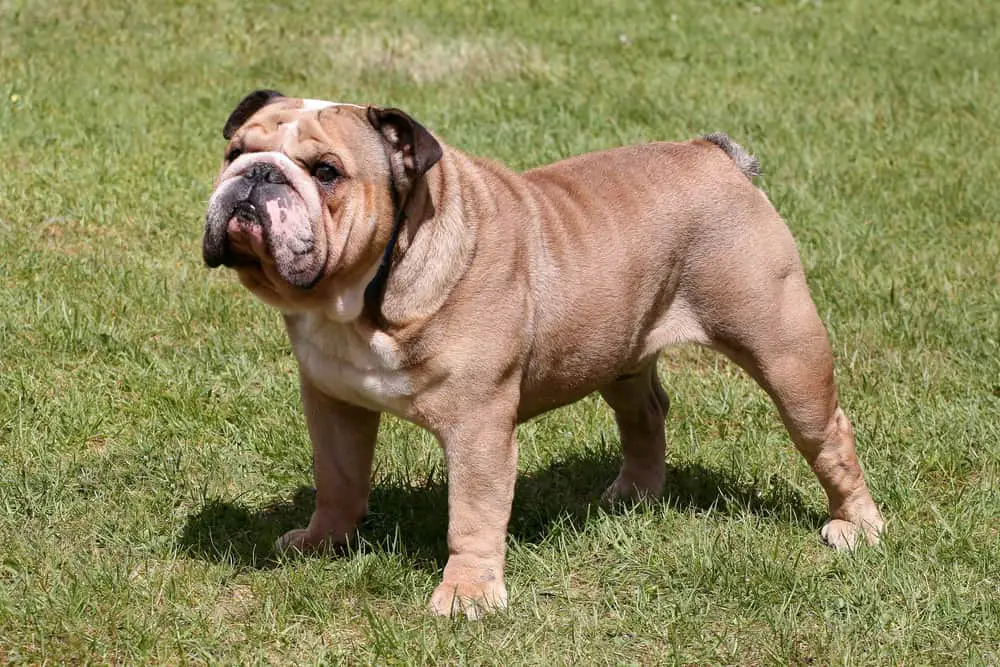
English Bulldogs are a well-known companion animal, made easily recognizable by their muscular bodies and short faces.
British Bulldogs have long been seen as a symbol of British culture, particularly during WW2.
English Bulldogs make excellent family pets and get on well with every member of the family.
However, potential owners should be aware of the various health complications found in the breed, most of which are associated with their squished noses.
Color: White, piebald, brindle, fawn, red, or any combination of these
Height: 12-15 inches (both males and females)
Weight: Males – 50-55bs, Females – 40-50lbs
Personality and Temperament:

English Bulldogs have a friendly temperament and enjoy spending time around people.
In fact, most Bulldogs prefer to be around their owners rather than other animals, and particularly love curling up on the sofa for a nap.
British Bulldogs make ideal family pets because they love to play, making them excellent for children.
English Bulldogs generally aren’t aggressive, although this might change if they feel threatened. However, their overly friendly nature makes them perfect companions for children, providing both the dog and the kids know how to behave.
As mentioned, English Bulldogs will usually prefer to be around people, but this doesn’t mean they don’t get on with other animals.
English Bulldogs get on well with other dogs, but should be socialized from a young age and trained properly, as they can enjoy throwing their weight around once they’re fully grown.
Training should begin as early as possible for English Bulldogs, and owners will have to be both patient and consistent.
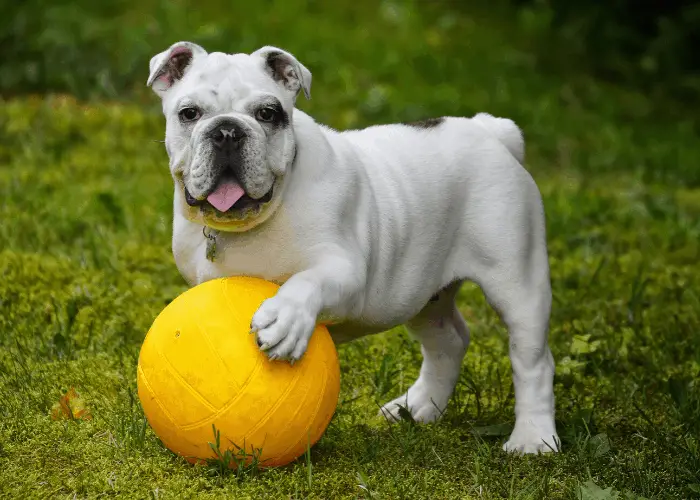
British Bulldogs aren’t the most intelligent breed, although they shouldn’t have too many problems with basic commands.
Owners wanting to teach an English Bulldog more complicated commands will have to devote plenty of time to doing so.
English Bulldogs should be walked daily, as the breed is prone to obesity. They should be given at least 30 minutes of exercise, but this shouldn’t be too intense.
A steady walk is much better for a British Bulldog than a heavy game of fetch. This is mainly because of their breathing problems, and owners should be careful to find the balance between too little and too much exercise.
While English Bulldogs are medium-sized dogs, their activity level means they’re suitable for apartments.
Most Bulldogs will be happy to spend most of the day sleeping, but owners should still be prepared to give them enough exercise because of the obesity problem.
Generally, English Bulldogs will be fine around strangers, but they can become protective of their property.
However, this will only ever result in barking, as Bulldogs aren’t a dangerous breed. Although they’re very muscular dogs, they can’t do much damage because of their underbite. This makes them good alert dogs, but they won’t do much more.
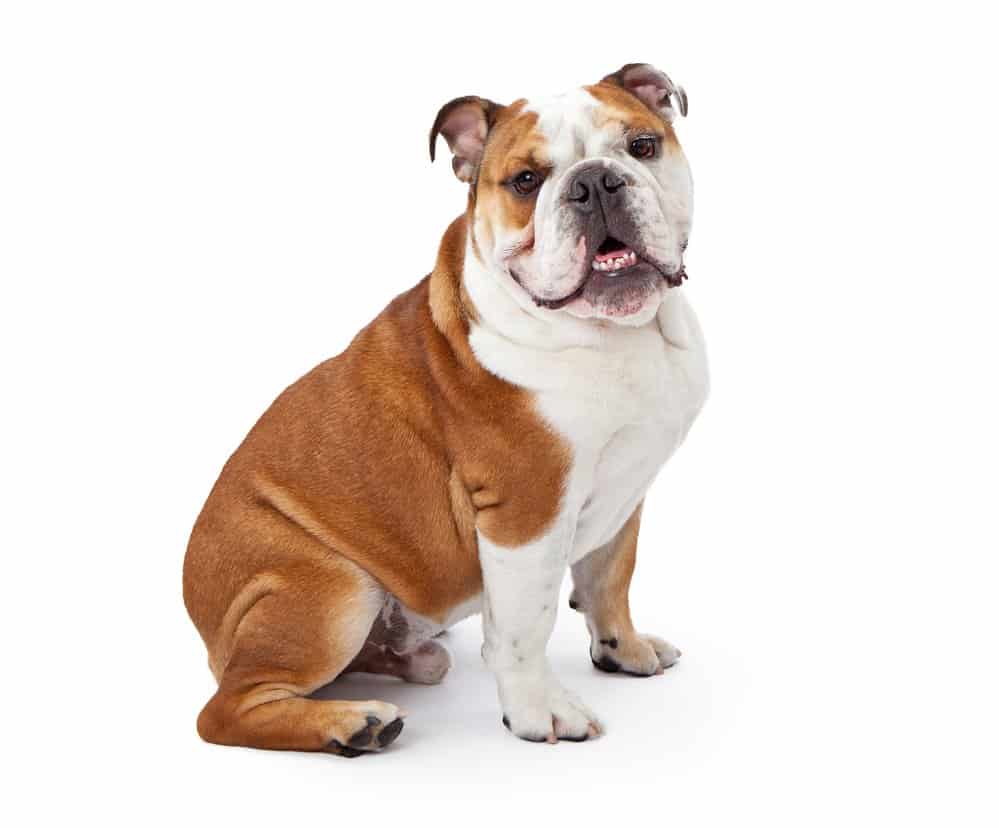
English Bulldogs are a good choice of pet for first-time owners. Bulldogs are quite easy to care for, and their exercise needs make them quite low maintenance.
That said, first-time owners should research the breed’s common health conditions and decide if this is something they can deal with, both financially and emotionally.
Another reason British Bulldogs make for an easygoing dog is that they can be left alone for most of the day.
This makes them a good choice for working owners, but it does mean the dog will need plenty of attention when it’s available. Bulldogs are very sociable animals, and a lack of contact with humans can quickly lead to depression.
As with all short-nosed dog breeds, English Bulldogs have a hard time in hot weather. To make things worse, they have very muscular necks, which puts even more strain on their breathing.
Owners should avoid keeping British Bulldogs in climates consistently hotter than 75 degrees. At this temperature, Bulldogs will be having real trouble, so it’s best avoided when possible.
However, English Bulldogs are fine to be kept in cooler climates. Bulldog owners need to be very aware of the best temperatures for exercising their dog, and should always be more cautious than they think is necessary.
English Bulldogs get heatstroke very easily, and are possibly one of the most at-risk breeds.
Grooming:
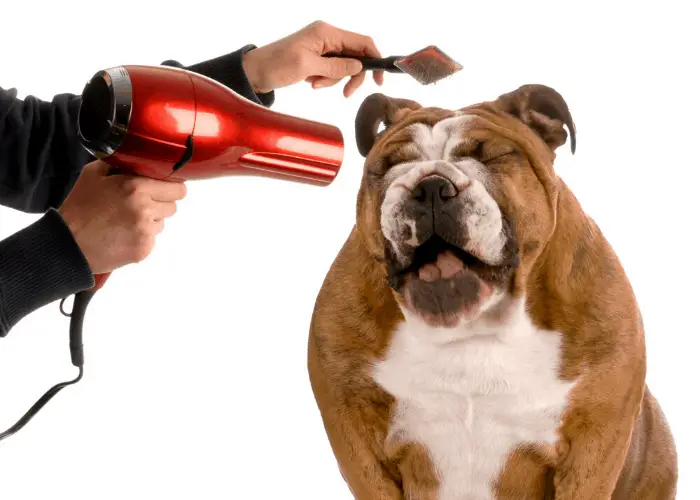
English Bulldogs have a short, sleek coat that sheds all year round, but is particularly bad during seasonal changes.
Many owners won’t bother to brush their Bulldog, but if you do, then a quick groom with a soft brush will be fine once a week. This should be increased to daily if shedding gets very bad.
Owners should check a British Bulldog’s face wrinkles several times a week, as they can easily trap food and other debris.
This can lead to skin irritation and infection, so their wrinkles should be cleaned with a damp cloth.
English Bulldogs can also have problems with their eyes, so these also need to be checked regularly for signs of debris or damage.
Any problems should be taken to the vet immediately, and owners should always be careful if they decide to clean a Bulldog’s eyes themselves.
Because Bulldogs aren’t very active it becomes very important to trim their nails. This will need to be done regularly to avoid pain and mobility problems.
Also, a Bulldog’s ears should be checked once a week and their teeth brushed every few days.
Common Diseases and Conditions:
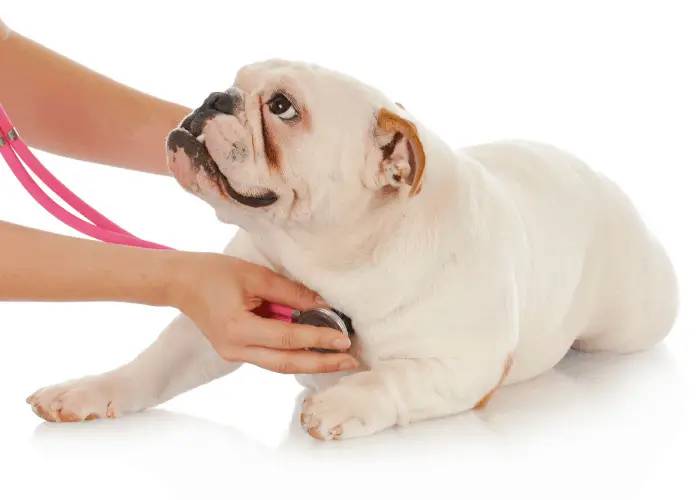
The biggest health concern for British Bulldogs is overheating. They’re easily one of the most susceptible breeds, which is mainly due to their squished faces.
English Bulldog owners should educate themselves on the signs of heatstroke and always be careful when they exercise their dog.
Bulldogs are also prone to tooth loss and other dental problems because of their underbite.
There’s not much owners can do for this other than to keep the dog’s teeth as clean as possible.
Bulldogs, like other brachycephalic dogs, have a range of breathing problems, which are made worse by the breed’s muscular build.
Although surgery to help the issue is possible, it’s very expensive, and owners should decide very carefully whether they’re happy to take on the responsibility of caring for such a dog before adopting.
History:

The first Bulldogs were recorded around 1631, but were nothing like the English Bulldog we know today.
In fact, this type of Bulldog was more like larger Bulldog breeds, all of which descend from a common ancestor.
The term “bull dog” comes from the fact that the breed was used in bull-baiting and other blood sports.
This is what has led to Bulldogs being considered a dangerous breed, and this even extends to British Bulldogs, although it couldn’t be further from the truth.
This old English Bulldog was used all the way up until the 19th century for bloodsports, but the Cruelty to Animals Act of 1835 made this illegal, although it didn’t stop the practice.
However, this also meant that some people looked for ways to keep the Bulldog breed alive.
One of the most interesting things about the British Bulldog is that it’s one of the few direct descendants of the original Bulldog.

This goes to show the power of selective breeding, as the English Bulldog has been made shorter, stockier, and less aggressive than its ancestor.
Similarly, this also means that the modern English Bulldog is only really suitable as a companion or show pet.
Its weight and breathing problems, along with its limitations for exercise, mean that it’s not capable of the same things as its ancestor.
However, this isn’t a big problem for Bulldog owners, as the breed make great pets!
The oldest breed club in the world is the Bulldog Club, which was founded in 1878. In 1886, the British Bulldog was recognized by the American Kennel Club, and has remained a popular breed since.
The British Prime Minister during WW2, Winston Churchill, was compared to a Bulldog, and this quickly cemented the breed’s place as a symbol of British culture and values.
Did You Know?
- The Bulldog is the official mascot of the US Marines, and most bases keep one as a pet.
- If you’re looking for English Bulldogs for sale, then expect to pay a hefty They can cost as much as 4,000USD.
- The Bulldog’s look has a grim backstory. Their short nose made it harder for other animals to bite on, and also allowed the dog to breathe better when biting a bull. Their face wrinkles helped to channel blood down their face so they could still see!
- The old English Bulldog nearly became extinct, and the modern Bulldog was created to be a more gentle and friendly companion pet.
- The English Bulldog was popularized in the Cartoon show: ‘Jake The Dog.”
You’ll Find Other British Dog Breeds in the links below:


